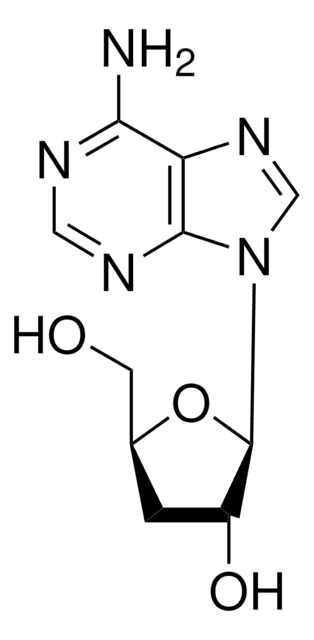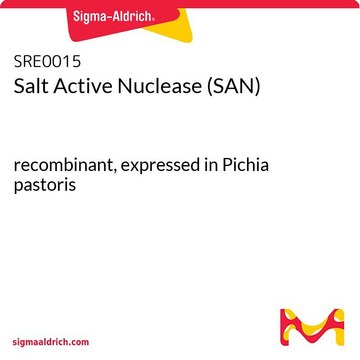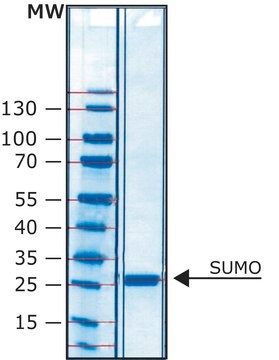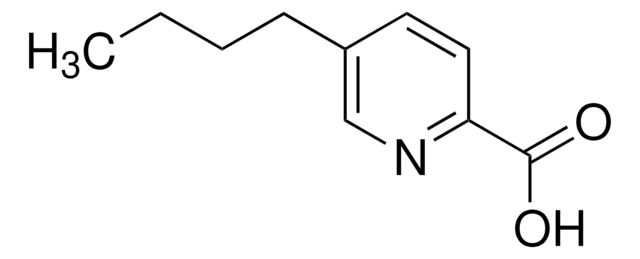Key Documents
T6901
α1-Mating Factor acetate salt
≥93% (HPLC), synthetic
About This Item
Polecane produkty
pochodzenie biologiczne
synthetic
Poziom jakości
Próba
≥93% (HPLC)
Postać
powder
metody
cell culture | mammalian: suitable
temp. przechowywania
−20°C
ciąg SMILES
CSCCC(NC(=O)C1CCCN1C(=O)C(CCC(N)=O)NC(=O)CNC(=O)C2CCCN2C(=O)C(CCCCN)NC(=O)C(CC(C)C)NC(=O)C(CCC(N)=O)NC(=O)C(CC(C)C)NC(=O)C(Cc3c[nH]c4ccccc34)NC(=O)C(Cc5cnc[nH]5)NC(=O)C(N)Cc6c[nH]c7ccccc67)C(=O)NC(Cc8ccc(O)cc8)C(O)=O
InChI
1S/C82H114N20O17S/c1-45(2)34-61(98-76(112)63(38-49-41-89-56-17-9-7-15-53(49)56)99-77(113)64(39-50-42-87-44-91-50)96-71(107)54(84)37-48-40-88-55-16-8-6-14-52(48)55)74(110)93-57(25-27-68(85)104)72(108)97-62(35-46(3)4)75(111)95-59(18-10-11-30-83)80(116)101-31-12-19-66(101)78(114)90-43-70(106)92-60(26-28-69(86)105)81(117)102-32-13-20-67(102)79(115)94-58(29-33-120-5)73(109)100-65(82(118)119)36-47-21-23-51(103)24-22-47/h6-9,14-17,21-24,40-42,44-46,54,57-67,88-89,103H,10-13,18-20,25-39,43,83-84H2,1-5H3,(H2,85,104)(H2,86,105)(H,87,91)(H,90,114)(H,92,106)(H,93,110)(H,94,115)(H,95,111)(H,96,107)(H,97,108)(H,98,112)(H,99,113)(H,100,109)(H,118,119)
Klucz InChI
SBKVPJHMSUXZTA-UHFFFAOYSA-N
Amino Acid Sequence
Zastosowanie
Działania biochem./fizjol.
Uwaga dotycząca przygotowania
Kod klasy składowania
11 - Combustible Solids
Klasa zagrożenia wodnego (WGK)
WGK 3
Temperatura zapłonu (°F)
Not applicable
Temperatura zapłonu (°C)
Not applicable
Środki ochrony indywidualnej
Eyeshields, Gloves, type N95 (US)
Certyfikaty analizy (CoA)
Poszukaj Certyfikaty analizy (CoA), wpisując numer partii/serii produktów. Numery serii i partii można znaleźć na etykiecie produktu po słowach „seria” lub „partia”.
Masz już ten produkt?
Dokumenty związane z niedawno zakupionymi produktami zostały zamieszczone w Bibliotece dokumentów.
Nasz zespół naukowców ma doświadczenie we wszystkich obszarach badań, w tym w naukach przyrodniczych, materiałoznawstwie, syntezie chemicznej, chromatografii, analityce i wielu innych dziedzinach.
Skontaktuj się z zespołem ds. pomocy technicznej








